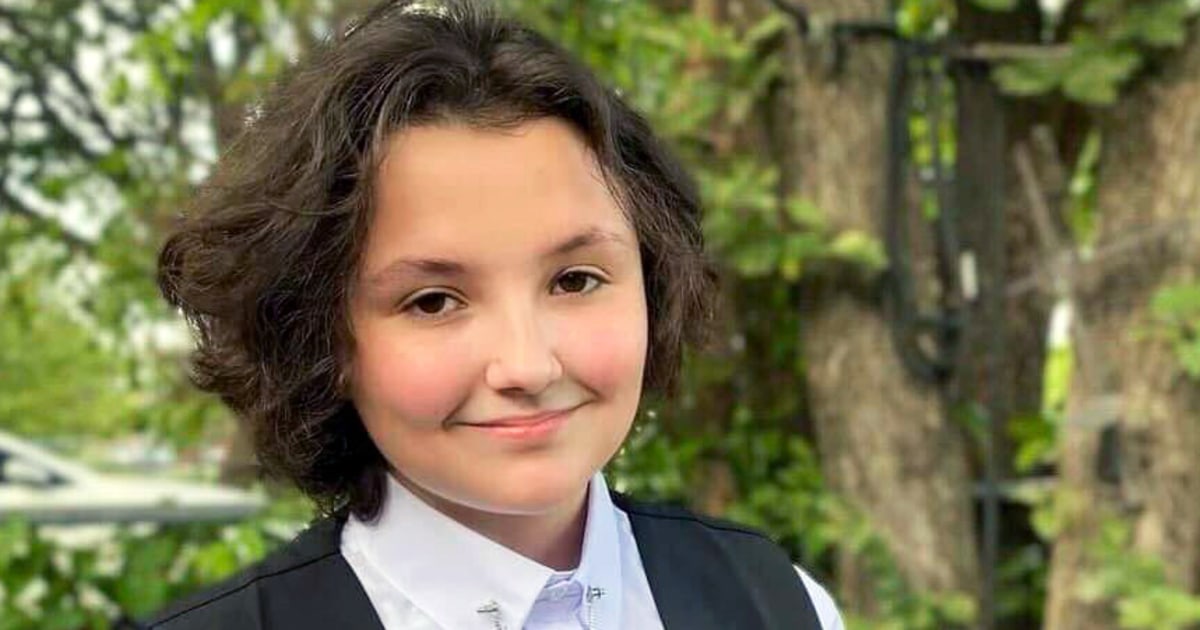How they work in the Suicide Attention Center and the main misconceptions about this serious public health problem.
09/10/2021 11:34 AM
Clarín.com
Good Life
Updated 09/10/2021 11:53
Every 40 seconds a person takes his life in the world.
And for each death that takes place, there are an estimated 20 attempts.
On World Suicide Prevention Day, the law passed in 2015 was regulated in the country, which aims to reduce its incidence through prevention and post-prevention, that is, actions aimed at working with people, families or related institutions to the person who took his own life.
For more than half a century, the Suicide Assistance Center (CAS) has been working towards the first objective.
Volunteers from this pioneer non-governmental organization in the country assist through line 135 in a personal, confidential and anonymous way to
people from all over the country seeking help
.
"The mere presence of a telephone line
is already preventive,
" María Fernanda Azcoitia, psychologist and president of the CAS steering committee, said in dialogue with the Télam news agency.
Taboo and stigma
"Suicide was always
very taboo and stigmatizing - he
added -. Today, knowing the statistics is still complex because it continues to be hidden because it is a death that leaves more questions than answers, it is hard for the environment."
In Argentina, according to figures from the Ministry of Health, there were
more than 31,000 deaths by suicide
between 2010 and 2019. In the world, each year, more than 700 thousand people take their own lives.
It is a phenomenon that affects all regions, however, 77% of the suicides reported in 2019 occurred in low- and middle-income countries.
Suicide is preventable in most cases.
Open doors
"We do not do therapy on the line. We help people to find alternatives with the resources they have with
attentive listening
, because when the crisis is very deep it is as if the horizon is closing, the person does not see possibilities, and the fact The fact that the line is anonymous makes people feel confident and free to speak, which is always a relief, "says Azcoitia.
"Many times, after listening,
referral
doors are opened
to psychological treatment
, other help lines or hospitals, according to the resources of each person," he explained.
Can you hear me?
For her part, one of the volunteers, who has more than 20 years of experience in the care of the line and asked to keep her identity confidential as part of the policy of the CAS, said that the question with which many of the so-called begin is: "Do you have time? Can you listen to me?
I need someone to listen to me
."
For the volunteer, this type of concern "gives the indication that in general people
do not have anyone to talk to about what is happening to them
, what they are thinking or what they are going to do."
He also highlighted that those who contact the CAS "recognize that, in reality,
they do not want to die
. What they seek is to silence the pain from which they cannot find relief or a way out", and "when we ask them if they would like to live if the conditions were different, everyone they say yes".
Myths and evidence about suicide
Myth: He who wants to kill himself does not say so
Scientific criteria:
Of every ten people who commit suicide, nine of them clearly stated their intentions and the other gave a glimpse of their intentions to end their life.
Myth: Suicide cannot be prevented because it occurs on impulse
Scientific criteria:
Before committing a suicide, every person shows a series of symptoms that have been defined as presuicidal syndrome, consisting of constriction of feelings and intellect, inhibition of aggressiveness, which is no longer directed towards other people, reserving it for themselves. , and the existence of suicidal fantasies, all that can be detected in due time and prevent their purposes from being carried out.
Myth: Suicides are mentally ill.
Scientific criteria:
Mentally ill people commit suicide more frequently than the general population, but they do not necessarily have to suffer from a mental disorder to do so.
But there is no doubt that every suicide is a person who suffers.
Myth: Anyone who commits suicide is depressed.
Scientific criteria:
Although every depressed person has the possibility of making a suicide attempt or suicide, not all those who do have this mismatch.
They can suffer from schizophrenias, alcoholism, character disorders, etc.
Myth: Asking a person about their intentions to kill themselves increases the danger that they will do so.
Scientific criterion:
It has been shown that talking about suicide with a person at such risk instead of inciting, provoking or introducing that idea into his head, reduces the danger of committing it and may be the only possibility that the subject offers for the analysis of his self-destructive purposes.
Myth: Suicide is inherited
Scientific criteria:
It has not been proven that suicide is inherited, although several members of the same family can be found who have ended their lives by suicide.
In these cases, what is inherited is the predisposition to suffer a certain mental illness in which suicide is a main symptom, such as affective disorders and schizophrenias.
Myth: Suicide prevention is the job of psychiatrists
Scientific criteria:
It is true that psychiatrists are experienced professionals in the detection of suicide risk and its management, but they are not the only ones who can prevent it.
Anyone interested in helping these types of people can be a valuable collaborator in their prevention.
Myth: A person who is going to commit suicide does not give signals of what he is going to do.
Scientific criteria:
Everyone who commits suicide expressed with words, threats, gestures or changes in behavior what would happen.
Myth: Anyone who attempts suicide is always at risk of committing it.
Scientific criteria:
Between 1 and 2% of those who attempt suicide succeed in the first year after the attempt and between 10 and 20% will do so in the rest of their lives.
A suicidal crisis lasts for hours, days, rarely weeks, so it is important to recognize it for prevention.
Myth: The suicide wants to die
Scientific criterion:
The suicidal person is ambivalent, that is, he wishes to die if his life continues in the same way and he wishes to live if there are small changes in it.
If this ambivalence is diagnosed early, the balance can be tipped towards the choice of life.
Myth: The issue of suicide should be treated with caution due to the socio-political problems it causes
Scientific criteria:
The subject of suicide should be treated in the same way as other causes of death, avoid sensational news and those actions that provoke the imitation of this behavior.
On the other hand, suicide as a cause of death is observed in countries with different socioeconomic regimes, from the highly developed to those with hardly any resources, as it responds to various factors, such as biological, psychological, social, psychiatric, existential, etc. .
Myth: If he really wanted to kill himself, he would have thrown himself in front of a train
Scientific criteria:
Every suicidal person finds himself in an ambivalent situation, that is, with a desire to die and to live.
The method chosen for suicide does not reflect the wishes of the person who uses it to die and providing another more lethal is classified as a crime of assisting the suicide (helping him to commit it), penalized in the current Penal Code.
Myth: He who attempts suicide is a coward.
Scientific criteria:
Those who attempt suicide are not cowards but people who suffer.
Myth: He who attempts suicide is a brave man.
Scientific criteria:
Those who attempt suicide are not brave or cowardly, since courage and cowardice are personality attributes that are not quantified or measured according to the number of times you take your own life or respect it.
Myth: Only the poor commit suicide
Scientific criterion:
The poor can also commit suicide, although they are more likely to die of infectious diseases due to their poverty conditions.
Myth: Only the rich commit suicide
Scientific criteria:
Suicide is a cause of death that is observed more frequently among the inhabitants of developed countries than in underdeveloped countries, but obviously the rich are not the only ones who commit suicide.
Myth: Only old people commit suicide
Scientific judgment:
The elderly make fewer attempts at self-destruction than the young and use deadly methods when attempting to do so, leading to suicide more often.
Myth: Children don't commit suicide.
Scientific criteria:
After a child acquires the concept of death, he can commit suicide and in fact this act occurs at these ages.
Myth: If you challenge a suicide bomber, you will not do it
Scientific criterion:
Challenging the suicide is an irresponsible act because it is facing a vulnerable person in a crisis situation whose adaptation mechanisms have failed, precisely the desire to self-destruct predominates.
Myth: When severe depression improves, there is no longer a risk of suicide.
Scientific criteria:
Almost half of those who went through a suicidal crisis and committed suicide, carried it out during the first three months after the emotional crisis, when all believed that the danger had passed.
It happens that when the person improves, his movements become more agile, he is in a position to carry out the suicidal ideas that still persist and before, due to inactivity and inability of agile movements, he could not do so.
Myth: Suiciders don't want to die, they just brag
Scientific criterion:
Although not all those who attempt suicide wish to die, it is a mistake to call them boastful, since they are people whose useful mechanisms of adaptation have failed and do not find alternatives, except to try against their lives.
Myth: The media cannot contribute to suicide prevention
Scientific criteria:
The media can become a valuable ally in the prevention of suicide if they correctly focus the news on the subject and comply with the suggestions of specialists on how to disseminate them.
SOURCE
Ministry of Health
Marathon for life
This Friday, World Suicide Prevention Day, the CAS, Healthy Escenarios and the Argentine Association of Mental Health will carry out a
"Marathon for Life"
with talks through Zoom and Facebook Live, from 9 a.m. to 10 p.m. You can access it through this link.
In addition, the planetarium, the bridge of the woman and the monument to the Spaniards will illuminate in yellow, the color of the awareness of this problem.
Where to ask for help
*** To ask for help: Suicide Assistance Center: in a situation of risk, go personally or on behalf of another person to the nearest health center or contact the following numbers: 135 (free line) / (011) 5275- 1135 / (0800) 345-1435 from all over the country.
*** If you, a family member or close friend are going through a deep emotional crisis, have thoughts about suicide or fear of causing harm or causing it to third parties, go to one of the following hospitals with mental health services in the City or Greater Buenos Aires (click here).
Look also
Teen suicide, a topic to talk about: signs to watch out for
COVID: warn of multiple neurological and psychological sequelae

/cloudfront-eu-central-1.images.arcpublishing.com/prisa/S7LJOK2FUJETBONYOXZTNAWH7Y.jpg)






